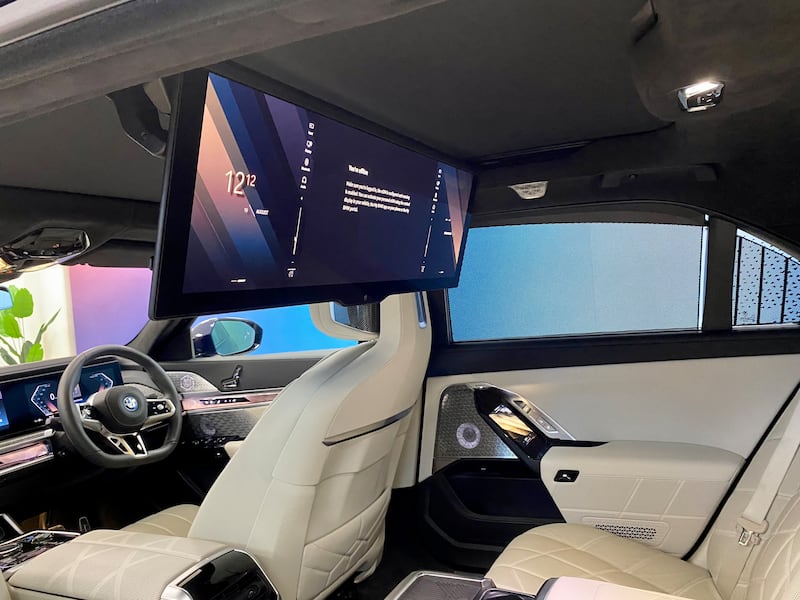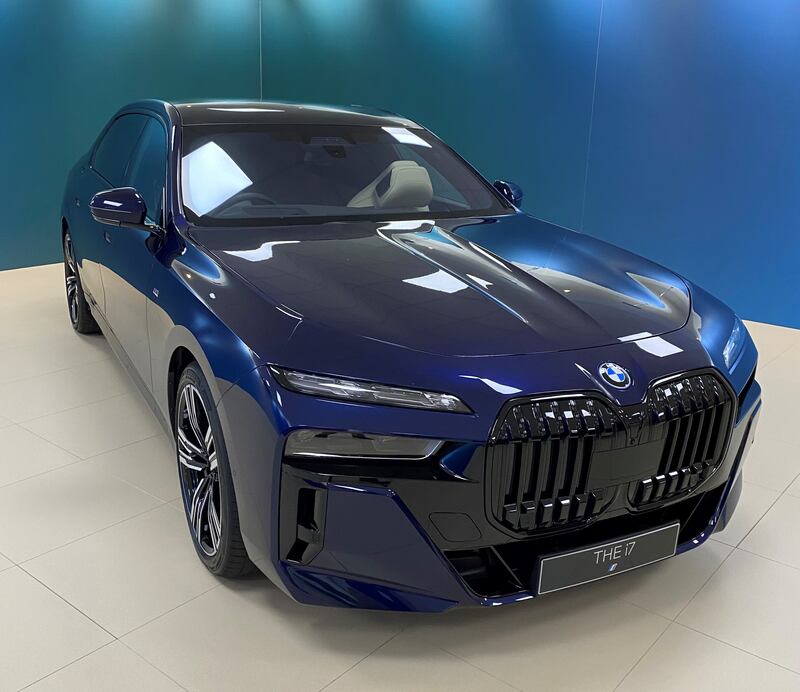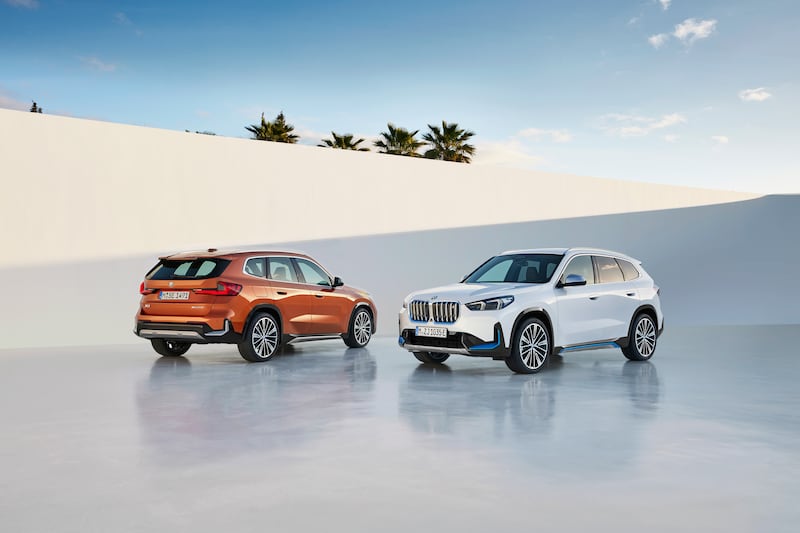BMW reckons it has found a gap in the luxury end of market left by arch-rivals Mercedes. The Bavarians have long played second fiddle to their neighbouring arch-rivals, but with automotive world in a state of flux they might well have hit upon a way to lure some luxury buyers away from the three-pointed star.
First off, playing the electric card, they are launching the flagship 7 Series in Ireland with a choice of either plug-in hybrid versions or a fully-electric variant, dubbed the i7. No diesel or petrol models will make it into Irish showrooms without a plug socket.
That’s unlike its rival Mercedes, which still offers its S-Class in regular engines alongside a plug-in hybrid and an all-electric model that is significantly different from the S-Class; even carrying a different moniker, as the EQS.
Second, while all the fancy touchscreens in the Mercedes are laid across the front dash, BMW is more focused on pleasing the people who travel in the rear seats. That’s epitomised by what BMW is calling its Theatre Screen.
Mike Scott: ‘Ireland is recovering from a long trauma, and opening out in to a liberal future. I feel very at home’
A Minecraft Movie review: Jason Momoa and Jack Black have a ball in a proudly silly family adventure
Pulse review: Plot is far from a priority in this Greys Anatomy-inspired soapy distraction
The Irish Times view on Trump’s tariffs: a turning point in economic history

Even the most cynical motoring hacks are gobsmacked by the 31.3-inch touchscreen that drops from the roof with a cinematic surround sound chorus. Along with reclining rear seats and automated rear blinds, this is akin to first-class air travel and while that massive screen might impede the driver’s rearview mirror, clearly the people who pay are sitting in the back.
BMW’s i7 xDrive60 claims an official range between charges of up to 625kms, while it can make it from 0-100km/h in just 4.7 seconds courtesy of its 544hp and 745Nm of torque. That’s despite weighing in at more than 2.7 tonnes. It can take a charge of up to 195kW on a fast charger, which means it can top up from 10 per cent to 80 per cent in 34 minutes.

The focus on rear seat occupants combined with BMW’s design decision to opt for enormous front grilles — a favourite feature of many Asian markets — shows the brand’s focus is probably more on markets further east of its traditional European base. The targeted buyer is more likely from Changchun than Cologne, Chicago or Cork.
All this luxury and performance doesn’t come cheap: prices start at €132,210 and among the various option packs, there is one called the Ultimate Pack that ticks most of the boxes but adds a princely €30,158 to the price.
At the other end of the price range, BMW is set to introduce its new X1 range with an all-electric iX1 version, due to be BMW’s lowest-priced electric model (although sister brand Mini has an all-electric version starting at €38,075).

That said, it won’t be cheap. Prices for iX1 start at €63,210, while the regular X1 – in diesel guise - comes in at €48,200 when the cars land in Ireland this November.
Powered by a 66.5kW battery, it promises an official range of up to 438km between charges and gets a two-motor four-wheel drive system that puts out an impressive 313bhp in Boost mode, while it can take a charge of up to 130kW from high-speed DC charging points. It’s the first rollout of this powertrain set-up, but we can soon expect to see it underpinning the new Mini Aceman and probably the next generation X2.
Aside from the electric power option, the most impressive feature of the new X1 is its size. The outgoing model was always a little cramped in the back, but the new version could certainly give the larger X3 a run for its money in terms of family motoring.
The new X1 is actually a little longer than the existing model, by 54mm, with a 22mm longer wheelbase, which really pays off in terms of interior space. Round the back there’s a 540-litre boot (which shrinks to 490 litres in the electric iX1 and in the PHEV models) and a rear bench seat that slides back and forth by 130mm (again, that’s limited to non-electric models). The car is also 44mm taller than before, yet it still manages very credible aerodynamic stats, with a drag coefficient of just 0.26Cd.
Inside, the X1 gets the big, curved digital dashboard display lifted from the iX electric SUV and the updated 3 Series saloon. There’s also a new ‘floating’ centre armrest, which features some touch-sensitive controls for the infotainment system. The screens (10.25in instrument panel and a 10.7in infotainment screen) get BMW’s new eighth-generation iDrive software, which now includes cloud-based maps, 5G connectivity, and an interior camera which makes it possible to remotely see inside the car via a smartphone app.
The standard specification has been given a bump up, and now includes two-zone climate control, sports leather steering wheel, sat-nav, forward collision warning with emergency braking, cruise control, and a parking assistant with a rear-facing parking camera.
Again, BMW has Mercedes in its sights with this car, targeting customers for the GLA and even the GLB, though it doesn’t offer a similar seven-seat option as that Mercedes.
With Mercedes seeking to focus more on the luxury end of the market, where pricing is less sensitive to the vagaries of global economics and margins are higher, undoubtedly BMW will be hoping to pick up some customers no longer in the target group of the three-pointed star.













